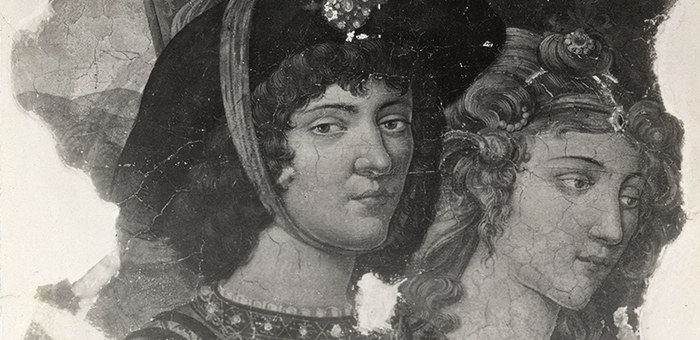It is a common occurrence for connoisseurs to come across non-original pieces. For Federico Zeri the most interesting sense of ‘fake’ was that which “attempts to penetrate the spirit and expressive world of a given epoch” by a process of mimickry, though without in any way managing to disguise the forger’s contemporary taste (Il falsario in calcinaccio, 1971).
He devoted a number of writings to this topic, which are for the most part collected in the volume Cos'è un falso e altre conversazioni sull'arte, edited by Marco Bona Castellotti (2011).He also ‘spilled the beans’ in some memorable radio and television programmes that often earned him personal enmity or spectacular dismissal of his services (one thinks of I falsi Modigliani; Il trono Ludovisi; the Getty Museum’s fake Kouros).
His interest in fakes is also represented in his photo archive which contains an extraordinary section of 2,192 photographs, nearly all coming from the market and private collecting. This precious, and in part antique, material documents how such artefacts were produced and circulated from the end of the nineteenth century to the year 1998 (when Zeri died), as well as his interest in certain particular twentieth-century forgers.
The Fakes section divides into Fake paintings (1,659 photos) and Fake sculptures (533). He arranged them for the most part by chronology and stylistic/cultural criteria, in this case referring to the prototypes of which the works documented are forgeries. They sometimes only keep to the style or cultural setting of the original model (for instance ‘Falsi: Firenze sec. XIV’), though sometimes they name the artist the forger was mimicking (‘Falsi: Firenze sec. XV: Beato Angelico e Botticelli’).
In a few cases, as with Falsario in Calcinaccio, Falsario Patetico and Icilio Federico Joni, Zeri arranged the photos to suit his monograph.
The photos often bear notes on the back in Zeri’s hand; most of them are gelatin prints, though some are documented in printing techniques from historical times.
Many come from galleries and antiquarians active in the second half of the 20th century (De Crescenzo, French & Co., Frederick Mont); some from historical antiquarians’ archives that swelled Zeri’s own photo archive, such as Giuseppe Bellesi from London, Luigi Grassi from Florence, and above all the Roman Galleria Sangiorgi from which come 208 photos. These form the bulk of the Fake sculptures group. They are largely in the form of ‘Parrucconi’, 19th-century busts modelled on Renaissance and Baroque sculpture. Original-style reproductions of monarchs, famous women, literary figures, musicians and aristocrats were classified by Zeri as 19th-century imitations forming part of the original-style reproductions that the Rome gallery put out on the market at the turn of the 19th/20th century.
Among the Fake paintings the commonest are primitives and ‘gold backgrounds’ from the 13th to the 15th century, followed by Renaissance-style portraits and 18th-century views of Venice.
In 2023 the Foundation finished cataloguing this section thanks to a contribution from the Friends of Federico Zeri Association.
